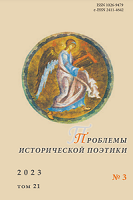Почвенничество и символический реализм В. П. Астафьева и В. Г. Распутина
Pochvennichestvo and Symbolic Realism of V. P. Astafiev and V. G. Rasputin
Author(s): Alla Yu. BolshakovaSubject(s): Russian Literature, Theory of Literature, Sociology of Literature
Published by: Петрозаводский государственный университет
Keywords: Astafiev; Rasputin; pochvennichestvo; symbolic realism; poetics; traditionalism; conservatism; genesis; ideal-image; Dostoevsky; ideologeme; antipochvennichestvo; symbol; artistic method;
Summary/Abstract: Since the beginning of the 21 century, when leading villagers (Astafiev, Belov, Rasputin) began to leave one after another, and it became easier for versifiers from different ideological positions to criticize their works, there was a need to protect village prose — the leading literary trend of the second half of the twentieth century. To do this, literary critics began to resurrect ideological attitudes (that were in demand in times of crisis to stabilize national consciousness), but not always justifiably, which caused a new wave of denial. The purpose of this article is to verify the existing and identify new approaches to village prose and poetics of its leading representatives in a similar context. The understanding of the subject in the context of traditionalism and conservatism is critically rechecked. The task of studying the poetics of such leading literary masters as Astafiev, Rasputin, comes to the fore from the point of view of the implementation in their artistic method of the “pochvennichestvo” ideology, most deeply rooted in the peasant-agricultural worldview. The author’s tasks include the verification of the terminological content of pochvennichestvo, its historical genesis in the works of Dostoevsky, the coupling of the pochvennichestvo theory and literature, as well as its modifications in the “new pochvennichestvo” by Astafiev, Rasputin and other masters of village prose. First and foremost, research material included the new artistic method of symbolic realism, where the key ideologeme “earth–soil” has found implementation in the image-symbol of Mother Earth, the primary basis for this literary trend. This position is proven through the analysis of the poetics of Astafiev and Rasputin, whose new method and its key image-symbol have acquired a vivid artistic individualization. Nevertheless, as a result, the author of the article comes to the conclusion that one should not limit the artistic ideology of Astafiev or Rasputin to any one direction of philosophical thought, since the poetics of these artists is complex and multifaceted.
Journal: Проблемы исторической поэтики
- Issue Year: 21/2023
- Issue No: 3
- Page Range: 303-327
- Page Count: 25
- Language: Russian

